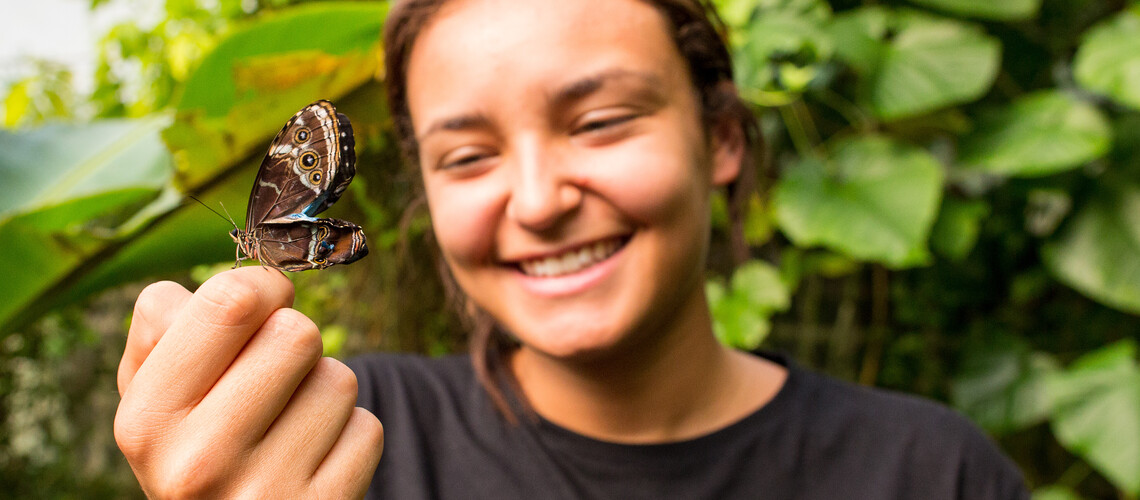Butterflies prefer UV lights says new study

Student holding a butterfly
08 August 2024
Butterflies prefer lighting that contains ultraviolet according to a new study by Aberystwyth University scientists that could help improve how insects are kept indoors.
It is widely known that insects of various species are attracted to artificial light, but very little is known about the effects of lighting on butterfly behaviour.
New research published in the journal Animal Behaviour, shows that while artificial lighting without UV does not affect the general behaviour of butterflies; given a choice, they prefer ultraviolet light.
The study by academics at Aberystwyth University’s Department of Life Sciences, with the help of the National Botanical Gardens of Wales, conducted the research in a space where the butterflies could fly freely.
The arena was divided into two halves to test two different types of lighting conditions with Vanessa cardui, a butterfly more commonly called the Painted Lady.
The Painted Lady butterfly has similar colour vision to many other insects, but quite different to humans, since their eyes have photoreceptors sensitive to UV, blue, and green light.
The butterflies showed a clear preference for the UV light even when it was less bright than the non-UV.
Animals kept in captivity, such as those in zoos or domestic pets, are often kept in conditions with artificial light. However, artificial light designed for humans lacks UV wavelengths that many animals can see.
The findings have implications for the welfare and behaviour of animals, with artificial lighting in indoor enclosures for birds, reptiles, fish and insects often lacking UV wavelengths.
Senior author of the research, Dr Roger Santer from the Department of Life Sciences at Aberystwyth University, said:
“The welfare of captive animals is a matter of great importance, whether those animals are raised commercially, kept as pets or bred as part of conservation efforts. That’s why studying the impact of the environment we keep these animals in is crucial. It can make a big difference to their health and wellbeing – and lighting is one part of that.
“As humans, we are often not the best judges of how other animals experience the world. Insects, such as butterflies, are one example. Human vision is not sensitive to UV wavelengths, but UV is an important component of the colour vision of many other species.”
Dr Rowan Thomas, the lead author, added:
“The current ethical guidelines for butterfly keepers specifically mention food, space, temperature, humidity and hygiene, but not light. Understanding their lighting needs could improve butterfly house husbandry, and in turn allow more on-site breeding, and the healthier insects might also improve visitors’ experience. Improved husbandry practices might also enhance the robustness of butterflies raised for release.”



